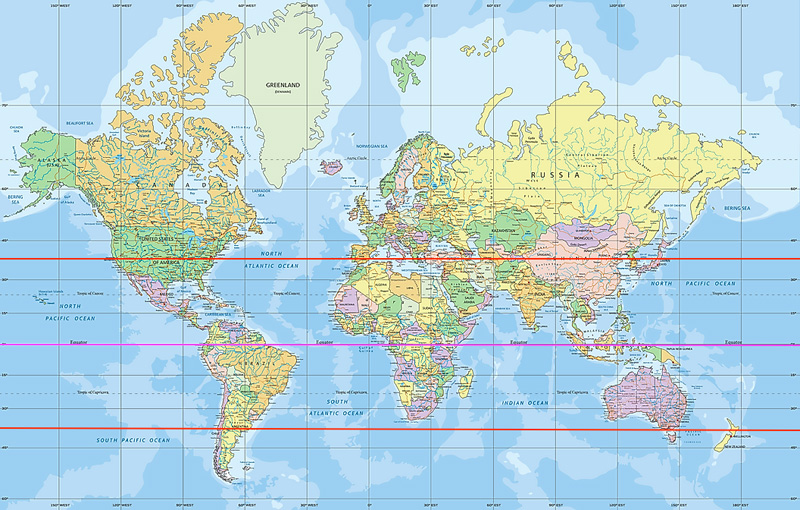
Sailors’ Word of the Day: Latitudinarian
Sailor Dave Demarest thought we ought to know about his ‘word of the day’ and sent it our way. The word is ‘latitudinarian’ and is pronounced “lat·i·tu·di·NER·i·an”.
According to the Merriam-Webster online dictionary, latitudinarian means: not insisting on strict conformity to a particular doctrine or standard; tolerant; specifically — tolerant of variations in religious opinion or doctrine.
Here’s the thing … based on that description, it could be said that sailors are latitudinarian inasmuch as sailors are a very tolerant species, particularly when it comes to the multitudinal variations in sailboat sizes, designs, preferred sailing styles, sailing locations, whether to sail as part of a group or alone … The list of variations that exist in the sailing world is almost endless, and sailors clearly do not insist on strict conformity to a particular doctrine or standard — except when it comes to one-design racing. One-design racing is just that, and therefore the scope for nonconformity is zero. Oh, and there are some sailors who might feel less tolerant of a boat that doesn’t actually use the wind to propel it across the water, say, a power boat for example. But overall sailors are a pretty relaxed, tolerant and flexible bunch, and therefore in our minds, latitudinarian.
That said, we don’t want anyone to think we only looked at one source for our understanding of ‘latitudinarian.’ According to Wikipedia, latitudinarians were “initially a group of 17th-century English theologians — clerics and academics — from the University of Cambridge.” And without going into an in-depth discussion on the word and its meaning, most sources we viewed on the internet associate the word with religious doctrines. So if you were to take this explanation of latitudinarian as ‘gospel’ you might say we’re twisting its interpretation to suit our own purposes. But even then we would argue back that, for many sailors, the act of sailing is tantamount to a religious experience. Therefore, again, we suggest that sailors, by nature, are latitudinarian. Also therefore, we think we have the most apt name for our magazine, Latitude 38. For not only does it describe the attitudes of sailors, but it also describes our region of operations — the 38th latitude, which, in the physical sense, makes us all latitudinarians.

It’s interesting to note that latitude 38 runs right through another sailing mecca, Annapolis, Maryland, and then over to the proximities of Lisbon in Portugal, Alicante in Spain, the Balearic Islands, Sicily, Greece, Turkey, Korea and Japan. In the Southern Hemisphere it passes through Melbourne, Australia, and pretty close to Auckland, NZ, and South Africa. All are great sailing locations.
Seeing the map is also a reminder just how much of the world’s landmass is north of the equator and how much water is to the south of it. So now that you know about latitudinarians, you can go forth and explore the latitudes north and south with a true sense of your origins.

“Seeing the map is also a reminder just how much of the world’s landmass is north of the equator and how much water is to the south of it.” Enough with the Mercator projection maps, please! Whilst your statement is basically true, your illustration grossly distorts physical reality. Numerous studies have shown that growing up with the Mercator world map breeds Yankee arrogance and further distorts North-South political misunderstanding. Sadly, i thought we had discussed and remedied this problem back in the 1970s. It’s the 21st century, there is no excuse for this level of misrepresentation.
We admit the map does make Greenland and the northern continents look very big. We were looking to highlight the word latitudinarian and it once again struck us regarding how big the Pacific Ocean is. Your input prompted us to look up the stats where we found, the total area of land on the surface of the Earth is 149,900,000 square kilometres, of which 106,429,000 square kilometres is in the Northern Hemisphere and 43,471,000 square kilometres is in the Southern Hemisphere. So about 71% of the Earth’s land is north of the Equator.
A quick google on Mercator projections says it remains the most popular flat map of the world and, in fact, is how Google Maps shows the earth on the map they provide to Summer Sailstice events: https://summersailstice.com/events-map.
There are lots of problems we thought we’d remedied in the 70s that still persist today. The Mercator projection could certainly be one of the things that contributed to our distorted perception of reality but our therapist says there are many other contributors as well. We agree none of us should allow our own distorted perceptions of reality to influence our judgment on individuals, nations, continents or other groups of people.